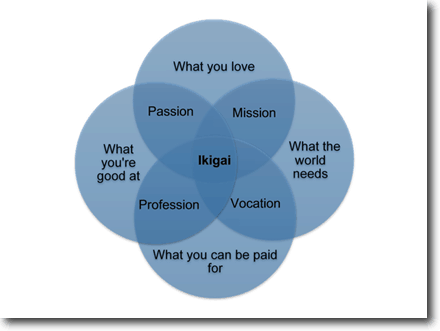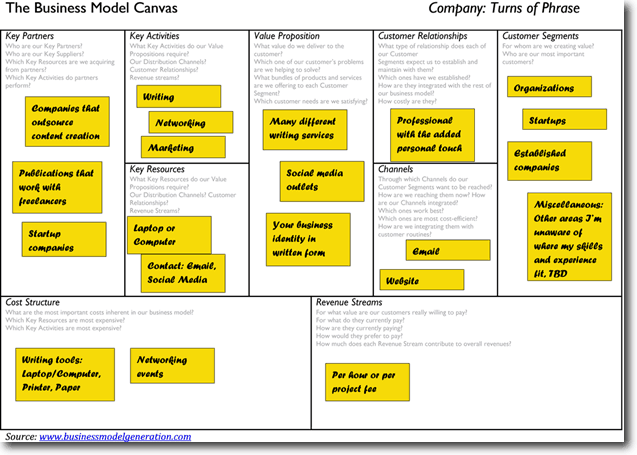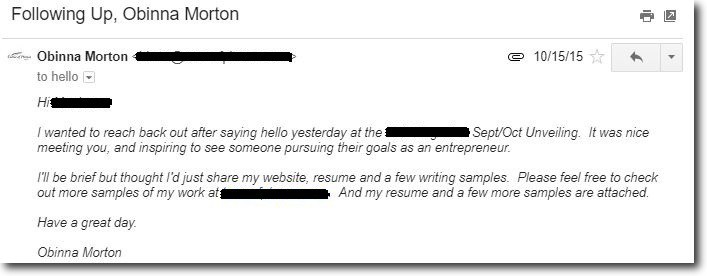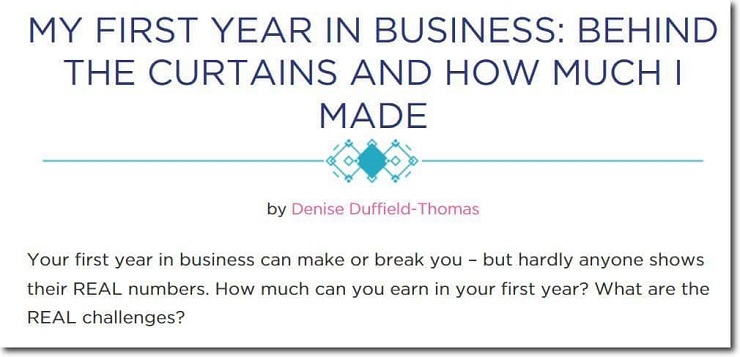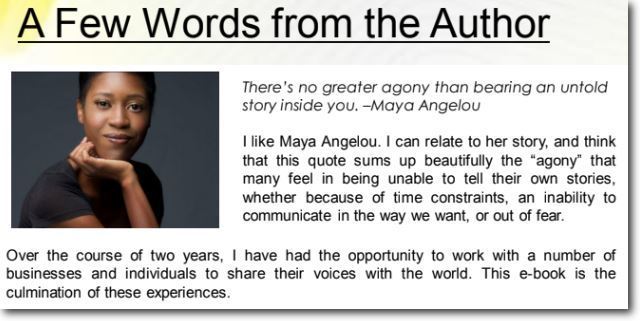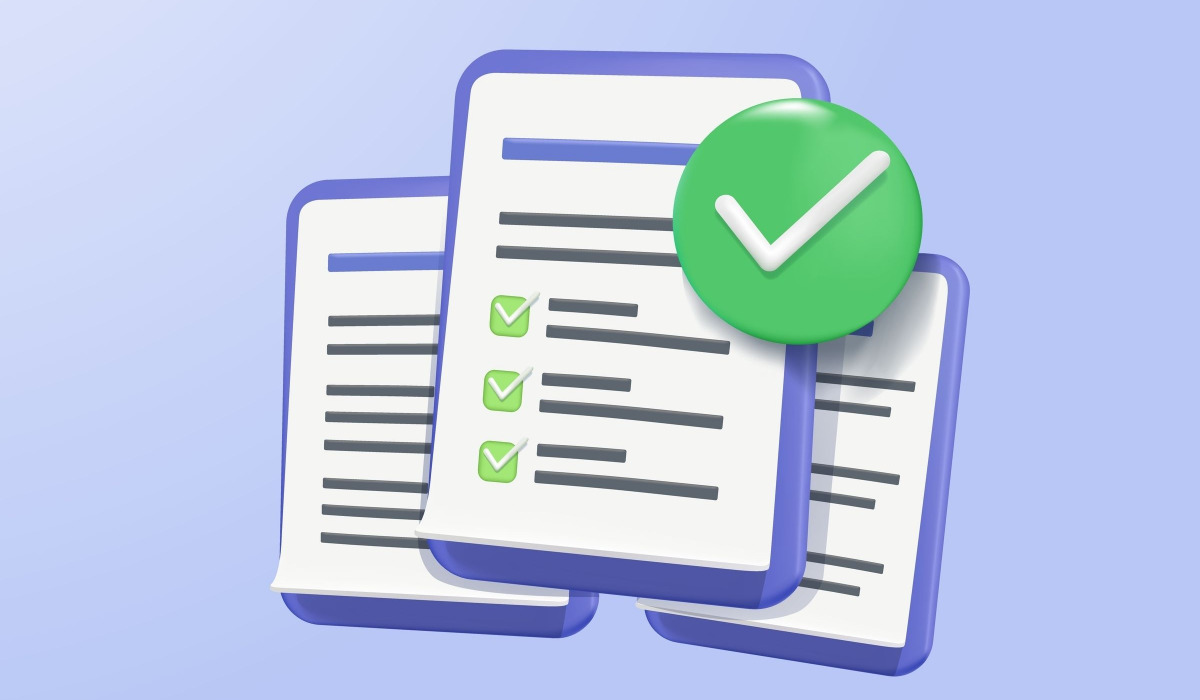Working for yourself can be tough. A 2014 study about the mental health of entrepreneurs found that 30% of the 242 surveyed experienced depression. In the general population, the number is significantly lower at 7%.
The rigors of entrepreneurship—building a business from scratch, wearing many different hats, and even setting the right price—can be stressful enough to put you in a serious funk.
As a result, more than once I’ve found myself struggling with a fear of entrepreneurship. There have been times I’ve wanted to quit, worried that I am wasting my time starting a freelance writing business. Oddly enough, I wasn’t scared to start my own business, but I still fight that persistent fear of failure.
Through it all, however, I never jumped ship.
In spite of the mental and emotional challenges, what I have learned is that you can either constantly worry and fear failure, which is a valid response, given failure rates among new businesses. Or you can stop worrying and trust your journey. I have chosen that latter, and have found that’s where true success and happiness in entrepreneurship lies.
I’d like to share with you a few methods I use to stop worrying. These methods have helped me and continue to help me stand my ground and place one foot in front of the other, building a profitable business that impacts others for the better.
Table of Contents
2 Exercises to Help You Find Clarity and Minimize Uncertainty
Calling on Your Network
Use Expressive Writing to De-stress
Get Some Cash Flow
Conquer Your Fears, Trust Your Journey
2 Exercises to Help You Find Clarity and Minimize Uncertainty
Clarity and focus are indispensable tools when confronting your fears in business. I’ve found two exercises have been particularly beneficial for finding the focus needed to move forward. They are:
1) Figuring out your ikigai and
2) Filling out a Business Model Canvas
Both exercises have forced me to look within to find my motivation and figure out what I have to offer the outside world. They can do the same for you.
Ikigai
I learned about this concept from a video by an entrepreneur named Marisa Murgatroyd. Ikigai is a Japanese term that means “reason for being,” and is similar to finding your motivation, or what we refer to in business as your “why.” It consists of four components—what you love, what you’re good at, what you can be paid for, and what the world needs.
Ikigai doesn’t just focus on how you can help the world, but equally on your own desires as well. So there is an element of who you are that is involved that adds gravity to your journey and business.
With each of the four areas fulfilled, you can thrive. Without all four, your potential will remain unfulfilled. Your ikigai rests at the intersection of what you love, what you’re good at, what you can be paid for, and what the world needs.
To find your own ikigai, answer a series of questions. I listed these questions below and also included my answers as an example. Then you combine all of the answers to create a phrase that summarizes this life force, or reason for being.
What do you love? (My answer: I love uniqueness and individuality.)
What are you good at? (I’m good at writing.)
What does the world need? (The world needs inspiration.)
What can you be paid for? (I can be paid to highlight the special voice of a business through words.)
What would your answers to these questions be? After answering them, combine them into one statement that fulfills both the needs of society and what you desire. My ikigai is:
To create compelling content that promotes the unique voice of an individual or business.
Answer this question, and when you hit a snag, refer back to your statement. It will help you remember your “why” and give you a stronger reason to continue because you have found the value that you and your idea really can add to the world, and to yourself.
Some journeys are smooth sailing, but if you’re facing a lot of obstacles—looking for more clients, setting a fee that you can live off of, or simply dealing with less-than-perfect feedback—you can easily get the feeling that things are unraveling. Ikigai connects you more deeply to the meaning behind your work so you can look at this information as data to improve your journey. It gives you the power to replace fear and worry with insight and action. Your energy becomes kinetic.
Business Model Canvas
A big reason people worry is fear of the unknown. And while we can engineer certain outcomes in life, the question of “what if” always looms. Variables exist and can skew results. With the many unknowns for entrepreneurs—how viable is my product, can I bootstrap or will someone invest in my idea, how do I use this new piece of information—minimizing variables becomes important.
To do so, you must answer as many questions as you can to have as much information as you can for the times when uncertainty will exist. You must give yourself a head start through preparation.
As an entrepreneur, you might say, “How can I answer the questions when I need to get started to know what the questions are in the first place?” One solution is the Business Model Canvas, a tool developed by a business theorist named Alexander Osterwalder that functions as a business plan for startups.
The Business Model Canvas consists of nine areas:
Key Partners: suppliers or partners you work with to outsource certain goods
Customer Segments: the people, organizations, and businesses you serve
Value Proposition: a set of products of services that provide value to a Customer Segment
Channels: ways that you communicate and distribute the Value Proposition to a Customer Segment (brick-and-mortar location, online, social media, apps)
Key Resources: resources needed to deliver the Value Proposition and sell your product (cash, credit, person with a certain skill, intellectual property rights)
Key Activities: actions to take so your business model works (developing a product, marketing, and selling)
Customer Relationships: the type of relationship you have with customers (personal versus automated)
Cost Structure: the costs associated with your business
Revenue Streams: The way or ways you make money (recurring payment, one-time payment, subscription fee, tips)
The idea behind the tool is that you answer questions for each category based on what you know at that moment. Then as your product or service begins to interact with the marketplace, you can update the Canvas based on new information. This tool allows for call-and-response—answer questions based on where you are, and then edit as you receive feedback, eliminating unknowns as you go.
Here is a link to a blank Business Model Canvas. You can also see an example of a filled-out Business Model Canvas below. Each segment has questions to focus your answers. The Business Model Canvas was also created with the visual element in mind, so you can use sticky notes to write your answers and post it to the sheet of paper as well.
There are also no right or wrong answers. The strategy behind this canvas is to help you organize the aspects of your business so you can feel more confident to move forward and grow.
To use myself as an example, I completed a Business Model Canvas two years ago when I first started. I identified three Key Partners: 1) companies that outsource content needs, 2) publications, and 3) startups. I now see other partners exist—accountants and software such as Wave for invoicing and HelloSign for creating contracts—and have updated to reflect them.
Through this process, you also learn what works and what doesn’t. What fear or worry you had will be replaced with actually taking steps and making decisions on how to continue to build, or avoid failure. You are forced to confront the nine areas of the Business Model Canvas by interacting with the outside world. Then you can best determine how the different areas can work together to the benefit of your business, or what changes you need to make to get there.
Like ikigai, the Business Model Canvas can help an entrepreneur find answers to important aspects of their idea, to acknowledge the “knowns” of their journey and start to build a business in line with what you can genuinely offer to benefit of others.
This knowledge alone can do a lot to alleviate stress of the unknown, knowing that a market does indeed exist for you, and that you provide something unique to it.
Note: Working with a mentor can support you and help you face your entrepreneurial journey with more courage. If you want to learn how to find a mentor you can trust, click below to download our free ebook.
Calling on Your Network
There is a proverb, “If you want to go fast, go alone, but if you want to go far, go together.” I think this saying sums up the power of having a network.
A network, which can consist of both personal and professional contacts, fills in the metaphorical blanks on one’s journey, and can also compound your efforts, taking you further than the fastest version of yourself can go alone.
The benefit of including both personal and professional contacts in your circle is that a person’s skills might cross-pollinate from one camp to the other. For example, a personal contact might also have professional knowhow. And sometimes you can build a more personal connection with a professional contact. Other contacts might be purely professional or purely personal. You simply increase your chances of succeeding by developing a network of people with varying capabilities, like a personally selected A-Team or Justice League.
How do you begin to assemble this network? First, it should include people who have had m
ore experience than you in entrepreneurship and business, and perhaps even life, too. In this way, you have your bases covered, and will never be too alone as you build.
With a network that includes entrepreneurs, business owners, and supportive friends and family, I have been given extra sets of eyes, ears, and hands. I have people in my corner I can trust who can offer feedback based on experience, advice, or emotional support.
So how can you build your own network?
Run an Internet Search for Industry-Related Groups
Simply type in the combination of (industry group)+the word “organization” or “association”+(city). You can also experiment with different keywords to net different search results.
After you’ve run your search, sift through the results and find the best matches. Find their contact information, either via the “Contact” page or sometimes at the bottom of the homepage where social icons sometimes are. You can also tweet or Facebook message them. Tweeting and Facebook are generally fast, I’ve found. Calling is great though because you get to connect with a human being. So I would suggest making this connection by picking up the smartphone and dialing those digits.
Contact Tips
When you call, ask if they having paying opportunities (if you are an independent contractor, like I was at the start) or volunteer opportunities (to gain free access to events that otherwise have a fee). You can also ask about upcoming events.
The benefit of finding a human being to reach out to is that you’ve started the process of building your network by meeting this first point of contact, who can then connect you to other people. If you attend events, you will also be meeting people and sowing seeds for building authentic relationships. Bring business cards if you have them, or make inexpensive ones via Vistaprint for less than $20. While I prefer being referred by someone and find it 100X easier than meeting someone randomly at a networking event, I did start with networking events first. So my advice is to get out there, even if you are introverted. Stay engaged and balance talking about yourself with asking the other person questions, too. Then follow up the following day, ideally.
Post-Event Follow-Up
So you just attended a networking event, you passed out a few business cards and got a few emails, now what?
1. Send an email to say “nice to meet you,” in your version of saying it. Add something specific about your event conversation to the follow-up. You will show that you were actually listening and don’t want to connect just for what they can do for you.
2. Either end the message there, setting the stage to possibly see them again around town—you’ll be surprised at how many people you run into again at another event—or invite them out to a cup of coffee or lunch to continue your conversation and see how you might be able to work together.
3. Connect with this person via LinkedIn. Leave a note to introduce yourself along with the connection request. Say that you met this person at a networking event and would like to connect. It’s a nice reminder, and more cordial.
You won’t connect with every person. But for some, you will, especially if you are genuine in your approach. And then you might find people who become both a client and mentor. People who will let you call them randomly just to ask a question about something that you’re worried about, because they’ve seen you in an authentic light, and not just as a businessperson.
Eventbrite
Networking is useful, especially early on. There is a quote by the late tennis legend Arthur Ashe, who predated the Williams sisters by about three decades. He said, “Start where you are. Use what you have. Do what you can.” This is what Eventbrite was for me, the start. Eventbrite is a site that lists events. It lets you search by topic, city, and date, and then organize by either relevance or date.
Look for networking events that have to do with entrepreneurship or the business industry you are in. The site will list events based on your chosen search criteria.
I attended a handful of events through Eventbrite. I met many people who helped me answer questions I didn’t know how to answer myself. I also had a few difficult moments as well, but overall, the Eventbrite experience was positive.
One event organizer connected me with her accountant. Another entrepreneurial couple met with me to share advice on starting a business. In exchange, I wrote content for the Eventbrite page of an event one of them was hosting. Another person I met became my first PR client. I also see some of these people from time to time at local events in Atlanta’s startup community.
Even if it seems random, events on Eventbrite can connect you to people who can help you with advice, or who can also become a customer. It will take you just deciding to attend events to meet people.
Friends and Family
It’s a sad fact that not everyone’s family is supportive of their entrepreneurial endeavors, or friends for that matter. I’ve been lucky to mostly have people close to me I can trust, and you learn who that is after a while. The people close to you can be a great source of support.
The benefit of having friends and/or family support is that each person you know has a particular strength. One friend might give great business advice, and one family member might offer emotional support. These people are already a part of your inner circle, and likely have expertise in different areas that could be helpful. So if you are fortunate enough to have a parent or parents who are encouraging, or a friend to call, take advantage of the “built-in” network that you have to share fears or questions, and continue moving forward.
Note: Working with a mentor can support you and help you face your entrepreneurial journey with more courage. If you want to learn how to find a mentor you can trust, click below to download our free ebook.
Use Expressive Writing to De-stress
Along your journey, you will collect many stories, from your origin to how you overcame obstacles to lessons you’ve learned. These stories differentiate businesses from one another, and that can be empowering for a founder. What if I told you that you can use writing about them as a way to de-stress and get through the difficult moments of entrepreneurship?
The Power of Expressive Writing
Writing can be used to take information and find meaning within it, and function as a type of “brain dump” to help you move forward with only the most useful information. The specific type of writing that can achieve this end is referred to as expressive writing.
Expressive writing explores life’s difficulties as a way to find meaning in trauma. According to the journal Advances in Psychiatric Treatment, some of the long-term effects of expressive writing include “greater psychological well-being” and “fewer stress-related visits to the doctor.” This writing can also be applied to entrepreneurship to reduce worry and anxiety.
So, you can essentially use writing as a way to relax and deal with your experiences. Journaling is one way to do this. But as an entrepreneur, you can take this idea one step further and create content that is just as expressive, but also serves as a tool for your startup or business.
An Example of Expressive Content
A blog post by business coach Denise Duffield-Thomas really inspired me to create a piece of content based on my own experience in the trenches of entrepreneurship. I hope that you can use it as a learning tool as well.
Denise outlined her first year as a business coach in a 4,200-word blog post. As a woman entrepreneur, she irreverently refers to herself as Lucky B, sometimes with an expletive. I know the style isn’t for everyone, but I still find her blog posts worthwhile. This one in particular is a good example of expressive writing.
(Source: Blog of Denise Duffield-Thomas)
Denise Duffield-Thomas shares challenges she faced, lessons she learned, and things she did well as a new entrepreneur. This post is also a good example of expressive writing because she was transparent about the stressful moments and obstacles she overcame to nonetheless have a profitable business after one year.
This piece of writing chronicled her entrepreneurial journey up until the point she wrote it, serving as a marker as she continued to move forward. This kind of content can do the same for other business owners, helping you to breathe deeply and release anxiety in the process. Here is how.
How to Use Expressive Writing to Confront Your Fears
In creating expressive content, you can either write for an audience of one by journaling, or publish a piece of content such as a blog article or ebook, and potentially help others in the process.
Journal Writing
To journal, you simply need pen and paper, or an electronic format (i.e. laptop, desktop, tablet, smartphone). I keep my thoughts in both physical journals and documents saved on my laptop.
Write your thoughts as they pertain to your startup or business, and don’t censor them. Give yourself permission to express the complexity of your experience: stressful elements, fears and worries, obstacles you have overcome, and successes. By writing out these thoughts, you purge yourself of the energy of the stress, and you can also find observations from your experiences that are worth keeping.
Published Content
Publishing your expressive writing has the same impact as journaling, but can also benefit more people, which, according to research noted in Psychology Today, can help a person better deal with stress. And it’s another way to connect with your audience and peers.
Should you decide to do so, you can draw from past experience writing school papers, like personal narrative essays. You can also find online content that resonates with you, and emulate it in your own words. But do not plagiarize. It’s just plain wrong, and it’s a good way to destroy your reputation and maybe even get sued.
Here are four tips for using expressive writing in content such as a blog article or ebook:
1. Choose a topic based on your experience. Write about your entrepreneurial journey rather than another topic that might interest you that you lack experience in. Even if it is a negative experience, if you learned from it, you have authority on what you’ve done. You are the expert of your story—share lessons from this place.
2. Use first person. Again, this is your narrative. Don’t be afraid to speak from your point-of-view and use “I,” “me,” “we,” or “our.” You are sharing your experiences and what you’ve learned with a potential audience.
3. Use “you.” You’re writing with the intention of an audience reading what you write. Just as I’m speaking to you on this blog post, you should do the same in most cases when you write on a public format.
4. Use your voice. Things like double negatives are generally off limits, but you don’t have to keep things formal. You have the license to speak conversationally and in a way that helps you connect with your audience. So whether you use a colloquialism such as “Mmmkay” versus “Okay,” or a quote that resonates with you, you don’t have to shy away from writing in a style that allows you to best express your message. For example, this ebook below shares lessons that most anyone can learn, but I start with a quote from the author and poet Maya Angelou that speaks to me. This expressive piece of writing has earned me guest speaking opportunities and now podcast interviews. Here is the intro:
5. Use examples. Include case studies, customer success stories, or data about how a specific action worked for you. The examples and data serve as a metric, or way to measure your impact. Metrics prove that you have really grown. They can also give proof that you have gained ground, and give an added boost in trusting that you are going in the right direction.
Writing a part of your entrepreneurial story can be like taking a deep breath and exhaling. Use it as a tool to give yourself permission to feel the weight of the journey, and then release it, whether you share with others or just yourself.
Get Some Cash Flow
I recently picked up part-time hours at a tutoring center to make sure that I have a steady cash flow to take care of general life expenses. I’ve found it stressful when I’ve had to pay for something and a client is late on a payment. In fact, much of my fear of entrepreneurship has been attached to money—whether I’m making enough to live, and, dare I say, live well.
So in addition to making sure I have the right measures in place to counteract some of the challenges I’ve had around cash flow (requiring a deposit, charging late fees, easy online payment), I bring in additional income as a tutor.
I don’t think you should be ashamed to pick up extra work or do side gigs to make sure you can pay rent or a phone bill as you grow a consistent stream of income from your business. While it might not be as “sexy” to build a business while working at a coffee shop, bartending, or tutoring, this path is valid too.
So if this section resonates, I think that finding a side gig is sometimes much easier than finding your ikigai, building a network, or developing a business model canvas.
One way to find a side gig is to create one. Do you have any random skills or expertise in a particular subject? If you play an instrument, you can give lessons. But side gigs are everywhere—restaurant host, bartender, tutor, dog-walker, piano instructor, babysitter.
You can also call places up to see if they are hiring for certain roles, or if you want to continue with your entrepreneurial inclination, create flyers to email to different places that can use your services. I’ve done both.
I think that this tip is one of the biggest secrets for helping me to worry less. If your cash flow is growing but doesn’t support you entirely yet, a side gig can offer the financial support you need to place your best foot forward in building your business, while still paying your bills.
Note: Working with a mentor can support you and help you face your entrepreneurial journey with more courage. If you want to learn how to find a mentor you can trust, click below to download our free ebook.
Conquer Your Fears, Trust Your Journey
Entrepreneurship is filled with many unknowns. You never know 100% if an idea will work. You might not be sure how to find more clients. You might ask yourself, “What should I charge?” Or, “how can I raise my rates?” You might also wonder how to cover expenses as you steadily build. I’ve asked myself all of these questions. Maybe these are things we all have to confront at some point. Regardless, not being able to pinpoint an outcome can lead to fear of failure in business and worry.
There are a number of ways to attack a feeling of anxiety head on:
- Focus on understanding your motivation (ikigai) and how you will manage your business (Business Model Canvas).
- Build your network, or tap into the one that you already have.
- Use expressive writing to tell an aspect of your business’s story.
- Supplement your income with a side gig.
These four tips have allowed me to find calm in the midst of things, lessen my worry, and continue moving forward. I believe they can help you do the same.
I now turn the mic over to you. If you’ve dealt with worry or fear in entrepreneurship, how do you confront it and continue to move forward while still trusting in your journey? Comment and share below.

